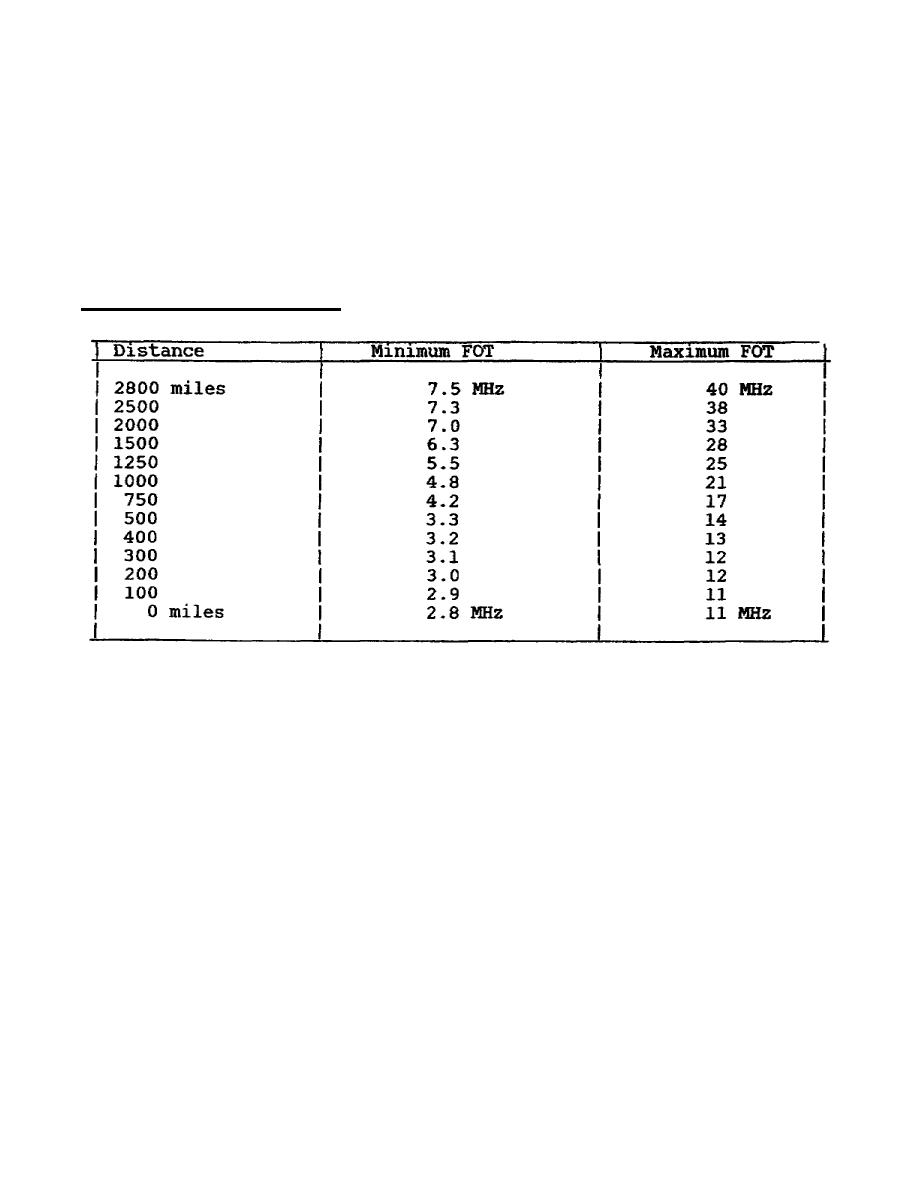
forces you to lower your frequencies because the layer ionization
levels are less at the poles.
5.
Frequency Planning Table.
The table below is an average for planning the frequencies
to use for certain distances during a maximum or minimum sunspot
cycle.
We should always use the FOT and not the MUF or LUF.
Fluctuations in the ionization levels of the ionosphere could raise
or lower our frequency beyond the MUF or LUF.
Frequency Planning Guide
NOTE:
Use with single-hop skip distance table for determining
required vertical take-off angle and antenna frequency coverage for
specific path lengths.
6.
Effects of Trees and Bushes on Antennas.
In a wooded or jungle area, the best antenna is a
horizontal antenna.
A vertical antenna's radiation is absorbed by
the vegetation. The denser the vegetation - the more the absorption.
Antennas that are affected are the whip, L, slant, and sloping
antennas. Metal objects also effect vertical antennas.
7.
Planning an HF Vehicular Radio System.
During displacements we must
use a whip antenna.
What
factors can we use to improve and
make better this type of
103



 Previous Page
Previous Page
